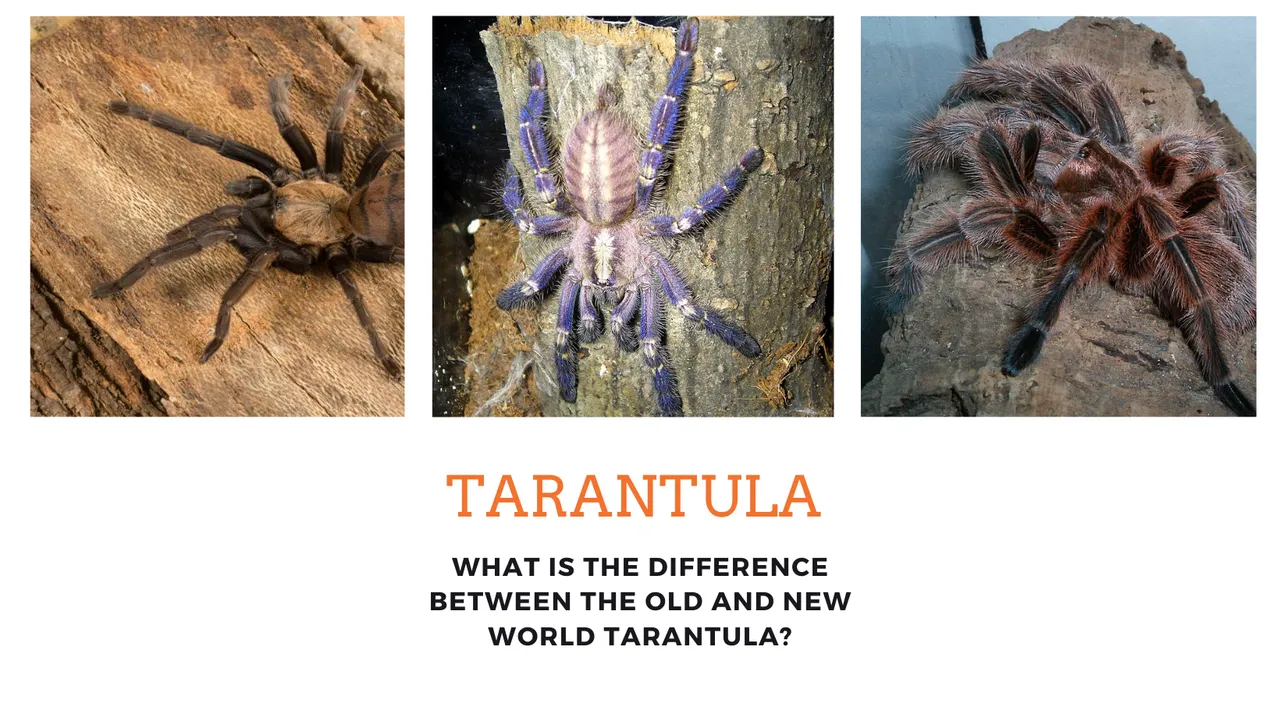
We classified tarantulas into two groups: new world and old world tarantulas. Many people believe that old world tarantulas are extinct species that once roamed the planet, while new world tarantulas have only recently appeared. While this is a reasonable guess, it is far from accurate. Old world tarantulas have been around for about the same amount of time as new world tarantulas, despite their name. They do, however, have a few differences that set them apart from other worlds. It's critical to understand these distinctions because many people dislike old world tarantulas.
Old World Tarantula
The "old world" encompasses the tarantulas found in Asia, Africa, Australia, and Europe, inhabited before discovering America in 1492. Many tarantula keepers dislike the behavior of old-world tarantulas. It makes them so unappealing to become pets. When provoked, nearly all tarantula species in this area are known for their speed, aggression, and willingness to bite. They have an unfavorable personality that impossible to handle or communicate.
Their primary defensive mechanism is through biting and subduing prey. These spiders are far less docile and are far more likely to attempt to bite us. Although we don't know the extent of effects of its venom; hence it is not thoroughly investigated. Some researchers suggest that their venom is potent than their new world counterpart. When someone receives a bite from the old-world tarantula, a high chance of hospitalization occurs due to localized pain, swelling, and fatigue. In the worst case, they can get severe muscle cramping, labored breathing, and fever, which can appear days after the bite.
The absence of the urticating hairs found in new world tarantulas is a distinguishing feature of old-world tarantulas. Threatened tarantulas use these hairs as missiles, embedding themselves in the skin of predators with barbs. The old world tarantulas must rely on swift movements and aggressive biting to fend off predators and subdue prey without these hairs. As a result, old world tarantulas have more painful bites and more venom than new world tarantulas. Stridulating is a behavior in which some species make a loud hissing noise by rubbing the bristles on their legs together. This noise could be heard from up to 15 meters away and is incredibly disturbing to hear when unexpected. It is a precaution before a bite.
While all old-world tarantulas are prone to biting and have a bad temper, they can have a wide range of appearances. Because of their appearance and fascinating personalities (when they're alone), many seasoned enthusiasts keep old world tarantulas in their collections. Here are common old world tarantulas:
Indian Violet Earth Tiger (Chirographys Fimbriatus Pocock)
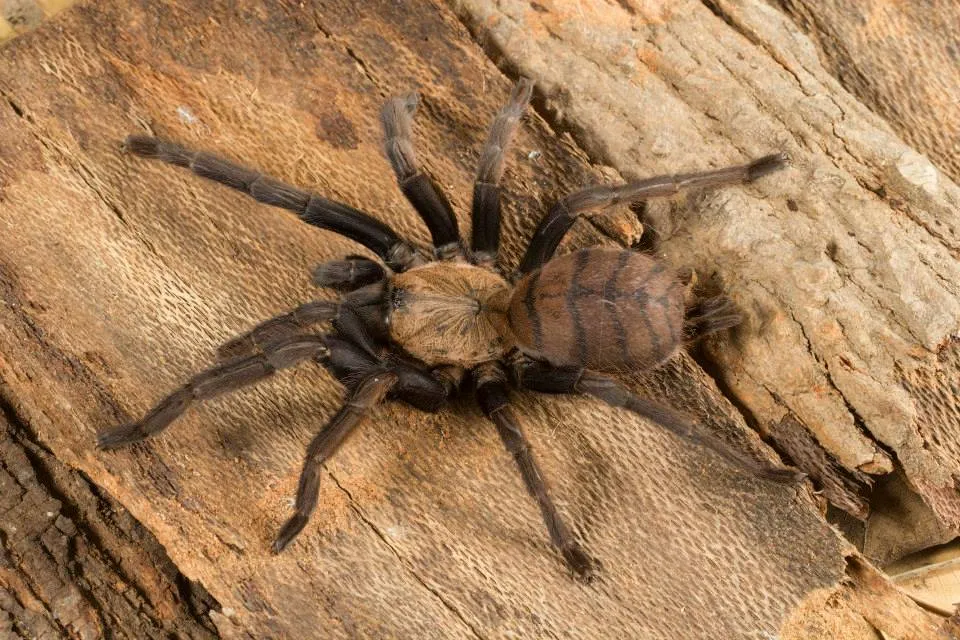
Chilobrachys fimbriatus Pocock, 1899 (India Biodiversity, CC BY)
The Indian violet earth tiger has a beautiful coloration and patterns, which researchers discovered in 1899 in India. It is the most attractive spider among the Chilobrachys genus. As a result, many people smuggled the species to Europe and America. These tarantulas are fossorial and favor to reside in deep ground holes, but they are heavy webbers. If we placed it in an enclosure, it creates an intricately webbed, spend a lot of time in and around. We can place feeders around the perimeter of this web to lure it out. These arachnids seem charming and beautiful, but being old-world species and members of the Chilobrachys family, they are known to be aggressive and defending, so extra precautions should be taken when dealing with them, as with other old-world species.
Gooty sapphire ornamental (Poecilotheria Metallica Pocock)
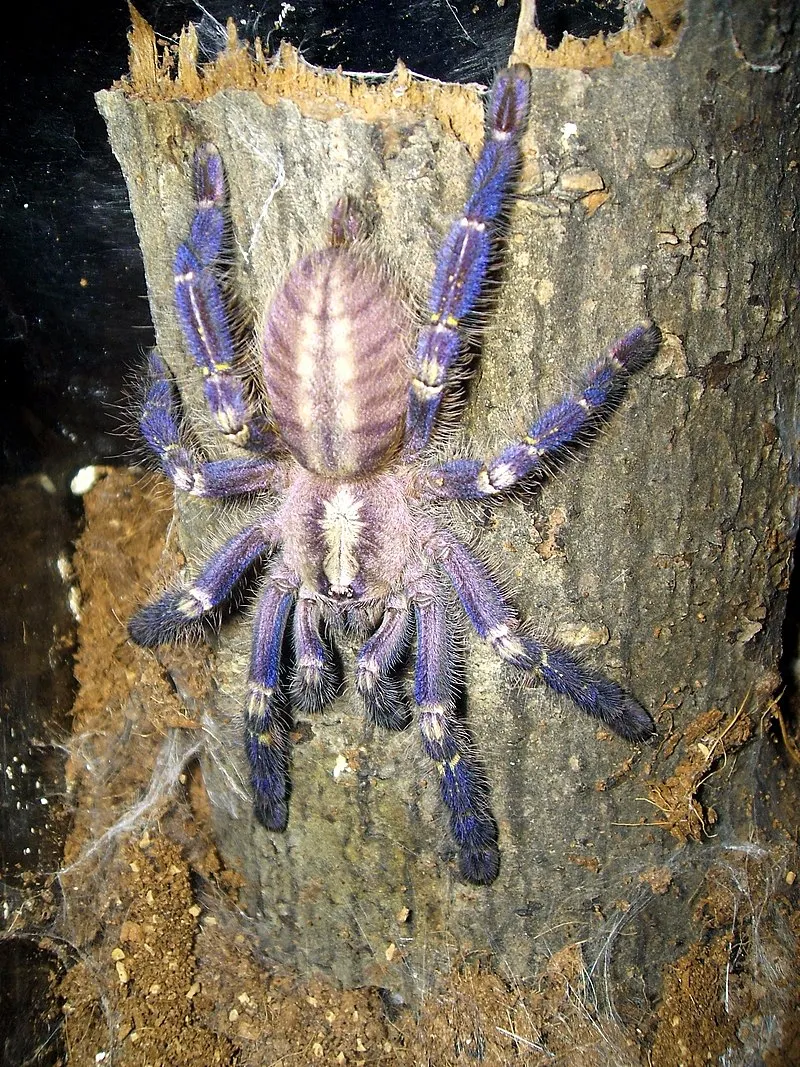 Poecilotheria Metallica (Wikimedia)
Poecilotheria Metallica (Wikimedia)Poecilotheria Metallica has a distinguishable metallic blue coloring pattern from Southern India. The Poecilotheria genus is a class of spiders with distinct colors and patterns. Locals called it Gooty tarantulas that refers to the railway timber yard in Gooty. In 2001, these tarantulas rediscovered in a forest between Nadyal and Giddalur. Many people smuggled these spiders to Europe and Asia due to their vibrant coloration and pattern. Besides, the Gooty tarantulas are the most sought-after species in the tarantula community.
New World Tarantula
The new-world tarantulas are a staple tarantula species for veteran and amateur keepers. We can find these tarantulas in the Americas. They are similar to old world tarantulas, except for a few distinct features. The new world tarantulas typically live on land and slower than old world tarantulas. Its bite is not a threat to humans, except for localized pain. The new world tarantula has urticating hairs that serve as its primary defense against attackers. Some tarantulas have a similar defense mechanism to lepidopteran caterpillars.
Urticating hairs cover the abdomen of tarantulas. When attacked or disturbed, it kicks the urticating hairs off their body with startling precision in the direction of their assailants. These hairs irritate an animal's skin or eyes by embedding themselves in the skin or eyes. The clout of small hair causes swelling to the attackers due to chemical interaction with the skin and mucous membranes to the urticating hair.
The new-world tarantula can grow to several sizes, which its legs can span from 7.5 centimeters up to 17.5 centimeters. Most species have an average size from 10 centimeters to 12.5 centimeters in leg span. It has different colors and patterns on its carapace, trochanters, and femurs of its legs. Here are common new-world tarantulas:
Goliath Birdeater (Theraphosa Blondi)
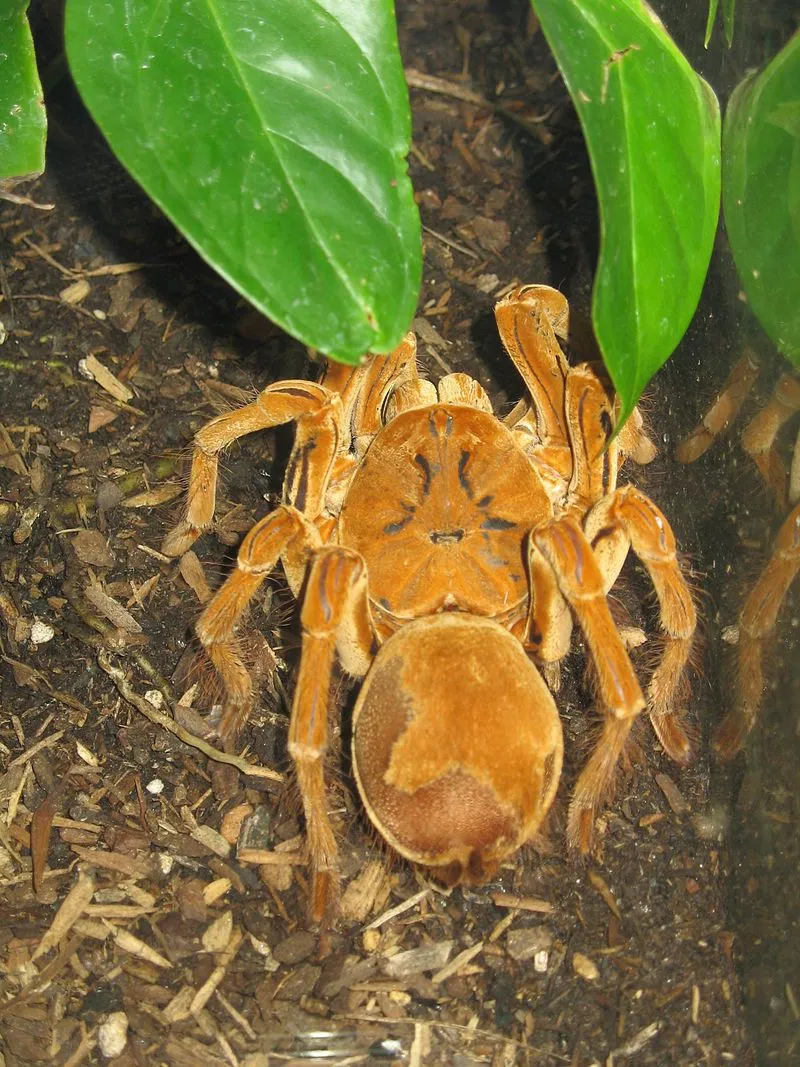
The Goliath birdeater found in South America. (Wikimedia)
The Goliath birdeater is the king of spiders, which can weigh up to six ounces and a foot leg span. It is the sizeable arachnid known to man, which inhibited Brazil, French Guiana, Suriname, and Venezuela. In 1870, Thorell classified it as the Theraphosa genus. When considering Heteropoda maxima (not a bird spider) and the Bolivian Pamphobeteus Antinous, this isn't entirely accurate. When a Goliath hunts for prey, its inch-long fangs pump neurotoxins to hapless prey. When provoked, the Goliath spider won't hesitate to lose its stinging setae or begin stridulating in a threatening posture. Its urticating setae are effective against primates. It stayed in its burrow throughout the day. They'll be visible at the opening of their burrow at nighttime.
Chilean Rose Tarantula (Grammostola rosea)
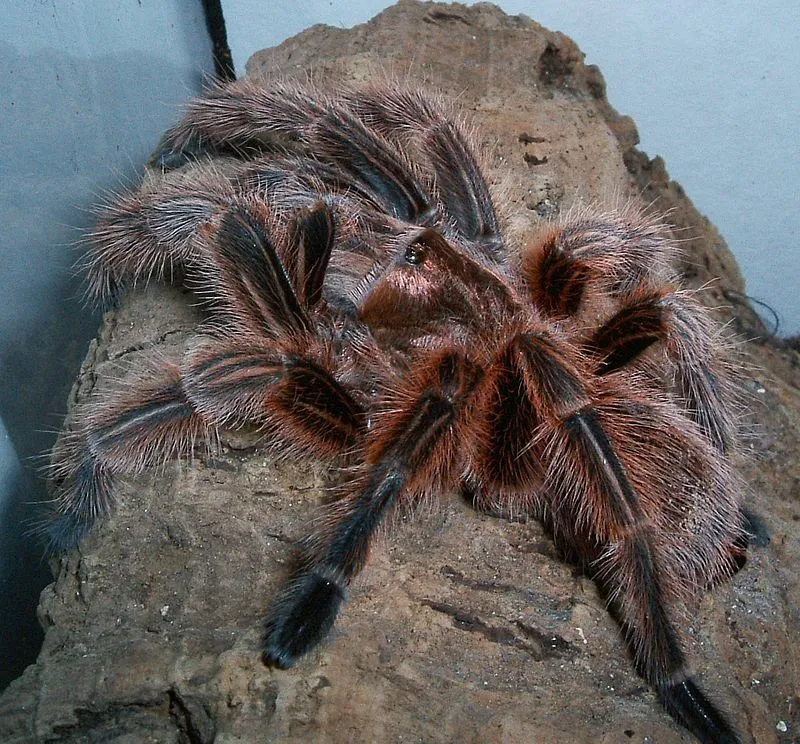
An adult Grammostola rosea (Wikimedia)
The Chilean Rose-haired Tarantula is one of the most docile and hardy spiders kept in captivity, which comes from one of the world's driest desert habitats, the northern Atacama Desert area. It has dark bodies with rose-hued hair. Its fang folds under the body to strike downwards when attacking its prey. It has an average size of 12 to 13 centimeters in leg span for females while 9 centimeters for males. It has a long lifespan, which females live up to about 20 years. These tarantulas require very little space and are usually active in the evening. It is good-natured and handleable but caressing and holding it can cause stress to it.
Curly Hair Tarantula (Tliltocatl Albopilosu)
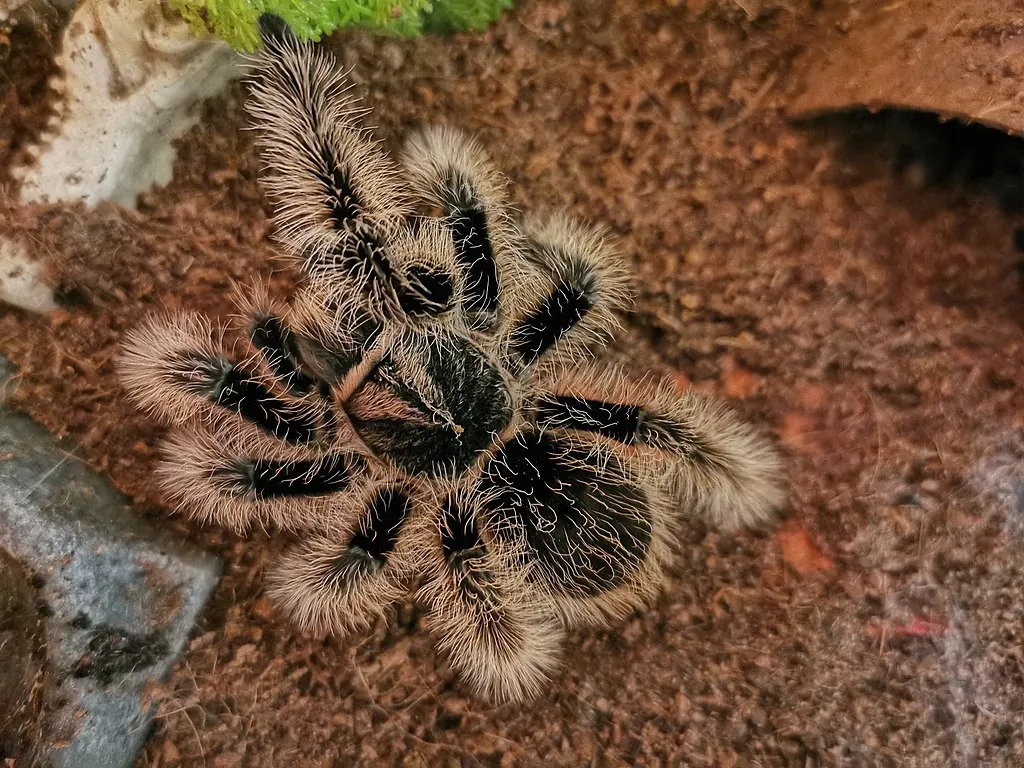
A young female Curly Hair Tarantula (Wikimedia)
The Curly Hair Tarantula refers to the Nicaraguan Curly Hair (true form) and the Honduran Curly Hair (curly hair). It is a terrestrial, semi-burrowing tarantula, which we can locate in the tropical rainforests of Honduras, Nicaragua, and Costa Rica. It lived near rivers and at the bottom of trees. In captivity, it can grow up to about 15 centimeters and can live up to 20. The curly hair tarantula preys on insects and small vertebrates. It injects venom to its prey using its two hollow fangs. Although its venom is harmless to humans, the urticating hairs they can kick throughout their hiding place are not safe.
Note: The cover image of this post is created by the author using Canva.